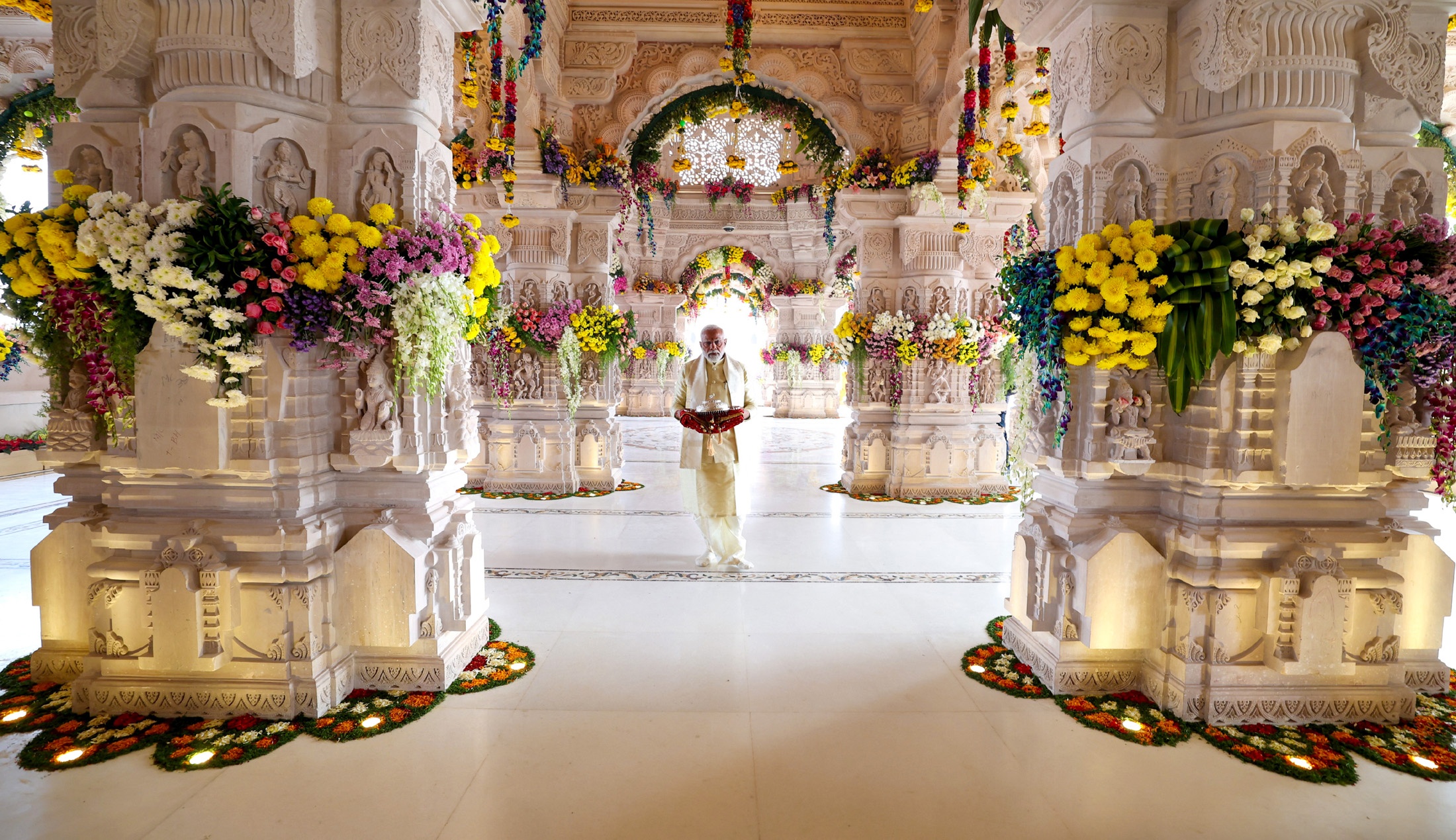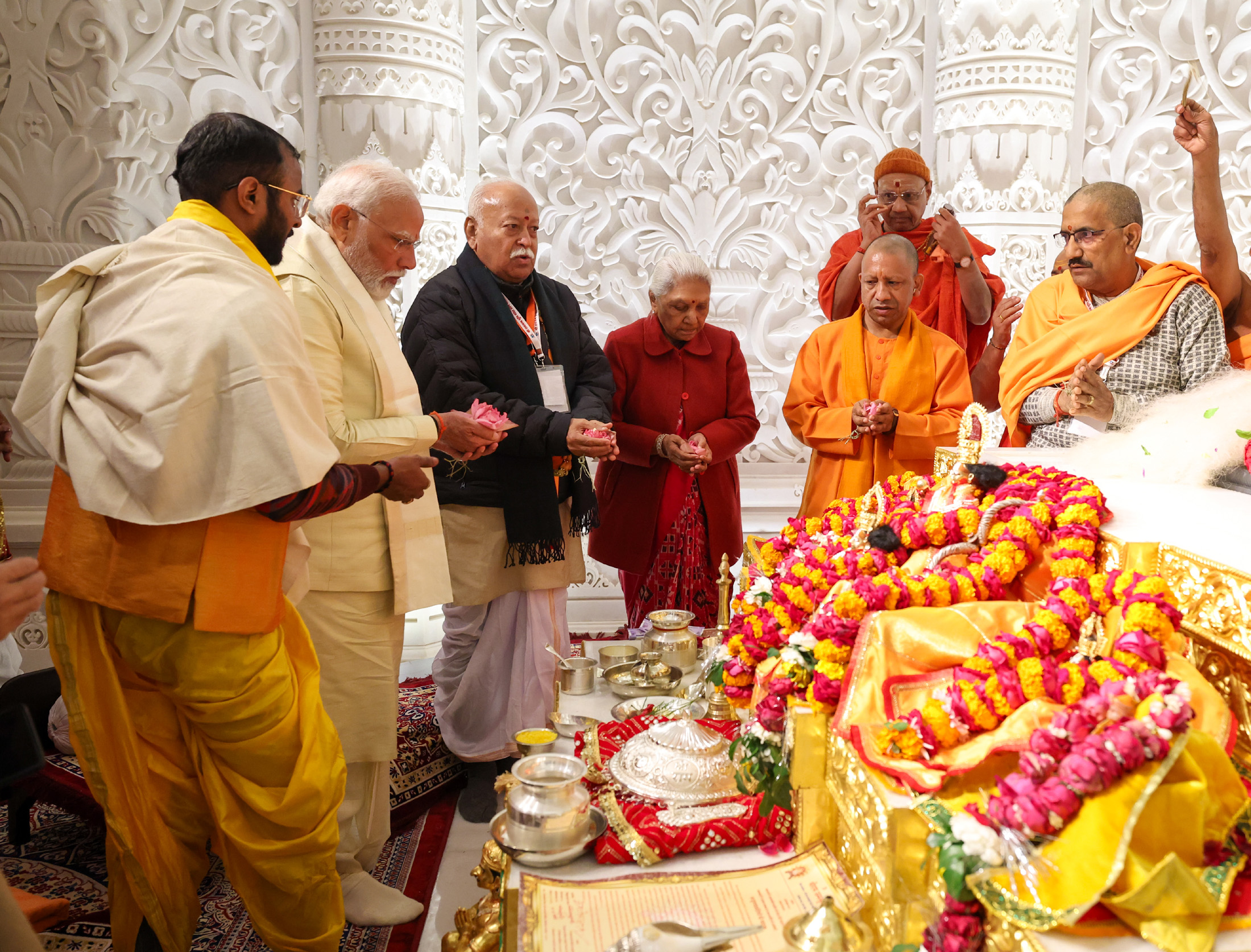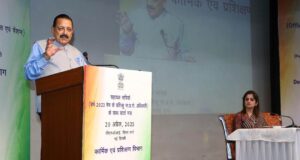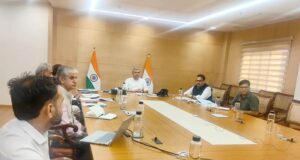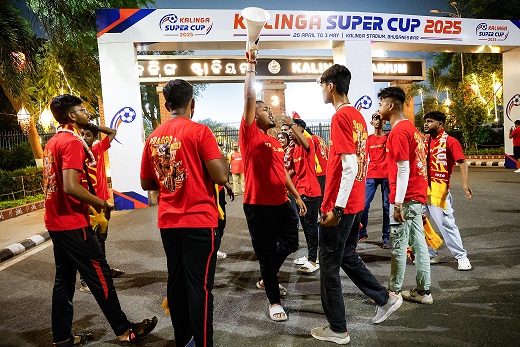Ayodhya:22/1/24:The Prime Minister, Shri Narendra Modi today participated in the Pran Pratishtha (consecration) ceremony of Shri Ramlalla in the newly built Shri Ram Janmbhoomi Mandir in Ayodhya, Uttar Pradesh. Shri Modi interacted with the shramjeevi who contributed to the construction of Shri Ram Janmbhoomi Mandir.
Addressing the gathering, the Prime Minister exclaimed that our Ram had finally arrived after centuries. “After centuries of patience, uncountable sacrifices, renunciation, and penance, our Lord Ram is here”, PM Modi remarked and congratulated the citizens on the occasion. The Prime Minister said that experiencing the divine consciousness inside the ‘Garbh Grih’ (inner sanctum) cannot be put into words and his body is pulsating with energy and the mind is devoted to the moment of Pran Pratishtha. “Our Ram Lalla will not reside in the tent anymore. This divine temple will be his home now”, the Prime Minister said expressing confidence and reverence that the events of today can be experienced by Ram Bhakts all around the country and the world. “This moment is supernatural and sacred, the atmosphere, environment, and energy signify the blessings of Lord Ram upon us”, Shri Modi said. He underlined that the morning Sun of 22nd January has brought a new aura along with it. “22nd January 2024 is not a mere date on the calendar, it is the origin of a new ‘kaal chakra’”, the Prime Minister said emphasizing that the joyous and festive mood of the entire nation was on a constant rise since the ‘Bhoomi Pujan’ of Ram Janmabhoomi Temple and the progress of the developmental works enthused new energy into the citizens
.
Speaking about the presence of Shri Hanuman in every work of Shri Ram, the Prime Minister bowed to Shri Hanuman and Hanuman Garhi. He also bowed to Lakshman, Bharat, Shatrughan, and Mata Janki. He acknowledged the presence of divine entities over the event. The Prime Minister apologized to Prabhu Shri Ram for the delay in seeing today’s day and said that as today that vacuum has been filled, surely, Shri Ram will forgive us.
Recalling, Sant Tulsidas’s return of Shri Ram in ‘Treta Yug’, The Prime Minister recalled the happiness that Ayodhya of the time must have felt. “Then the separation with Shri Ram lasted for 14 years and was still so unbearable. In this age Ayodhya and the countrymen suffered the separation of hundreds of years”, he said. Shri Modi continued, despite Shri Ram being present in the original copy of the Constitution, a prolonged legal battle was fought after the independence. The Prime Minister thanked the Judiciary of India for “keeping the dignity of justice intact. Embodiment of justice, Shri Ram’s temple was constructed through just means”, he emphasized.
Governor of Uttar Pradesh, Smt Anandiben Patel, Chief Minister of Uttar Pradesh, Shri Yogi Adityanath, Sarsanghchalak of Rashtriya Swayamsevak Sangh, Shri Mohan Bhagwat and President of Shri Ram Janmbhoomi Teertha Kshetra Trust, Shri Nritya Gopal Das were present on the occasion among others.
Background
The historic Pran Pratishtha ceremony witnessed the participation of representatives of all major spiritual and religious sects of the country and people from all walks of life including representatives of various tribal communities.
The magnificent Shri Ram Janmbhoomi Mandir is constructed in traditional Nagara style. Its length (east-west) is 380 feet; width 250 feet and height is 161 feet; and is supported by a total of 392 pillars and 44 doors. The pillars and walls of the temple showcase intricately sculpted depictions of Hindu deities, gods, and goddesses. In the main sanctum sanctorum on the ground floor, the childhood form of Bhagwan Shri Ram (the idol of Shri Ramlalla) has been placed.
The main entrance to the Mandir is situated on the eastern side, which can be approached by ascending 32 stairs through the Singh Dwar. There are a total of five Mandaps (Halls) in the Mandir – Nritya Mandap, Rang Mandap, Sabha Mandap, Prathana Mandap and Kirtan Mandap. Near the Mandir is a historic Well (Sita koop), dating back to the ancient era. In the southwestern part of the Mandir complex, at Kuber Tila, the ancient Mandir of Bhagwan Shiv has been restored, along with the installation of a statue of Jatayu.
The foundation of the Mandir has been constructed with a 14-meter-thick layer of roller-compacted concrete (RCC), giving it the appearance of artificial rock. No iron is used anywhere in the Mandir. For protection against ground moisture, a 21-foot-high plinth has been constructed using granite. The Mandir complex has a sewage treatment plant, water treatment plant, water supply for fire safety and an independent power station. The Mandir has been constructed employing the country’s traditional and indigenous technology.
 Odisha news today, Latest Oriya News Bhubaneswar Online Odia news Portal
Odisha news today, Latest Oriya News Bhubaneswar Online Odia news Portal

